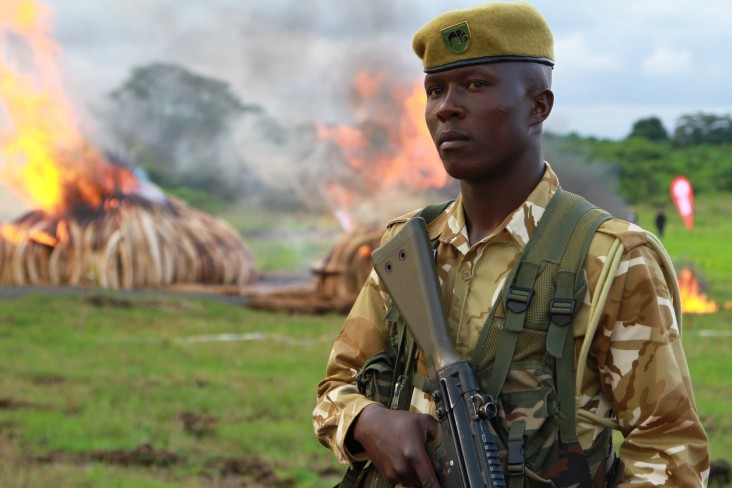Speeches Shim

OVERVIEW
Kenya is globally recognized for its rich biodiversity and iconic landscapes. Kenya’s economy and its citizen's livelihoods depend on their natural resources and nature-based tourism. Climate variability has led to significant economic losses and food insecurity. Other factors such as wildlife crime, urban expansion, and rapid population growth are threatening conservation efforts.
Read our monthly newsletter. Sign up for the newsletter here.
PROGRAM AREAS
Counter Wildlife Trafficking
We work with local and international partners, including the Kenya Wildlife Service (KWS), U.S. Department of Interior, and WildlifeDirect, to counter wildlife trafficking. Our programs enhance wildlife management, raise awareness on wildlife conservation, and help prosecute wildlife crimes. We also provide Kenyan scientists research grants to explore innovative ways to protect animals.
Biodiversity Conservation
USAID and KWS pioneered the community conservancy model in Kenya. Communities play a key role in both the protection and conservation of wildlife. Local communities are best positioned to support on-the-ground anti-poaching efforts. This approach protects wildlife, expands economic opportunities, and enhances the ability of people and land to withstand climate variability and shocks. An innovative partnership with the Northern Rangelands Trust (NRT) benefits 630,000 people in 39 community conservancies. This partnership is creating space for 65% of wildlife living outside Kenya’s parks and reserves. Our work with NRT is also developing community resilience strategies.
Clean Energy and Climate Change Adaptation
Transitioning to a low emissions economy is a key component of Kenya’s Vision 2030. We are working with the Government of Kenya to implement the National Climate Change Action Plan. Kenya is a flagship country for the U.S. Government’s Enhancing Capacity for Low Emissions Development Strategies (EC-LEDS). This program accelerates economic growth while slowing greenhouse gas emissions.
FACT SHEETS
ACTIVITY FACT SHEETS
Promoting Self-Reliance and Community Engagement for Water Towers
Resilient Community Conservancies Program
The Community Policy Support and Implementation Program
The community Conservancies Seed Grant Program in Maasai Mara
The Inter-agency Agreement to Support Wildlife Conservation and Combat Wildlife Crime
STORIES
Rescuing a baby Elephant in Kenya
NEWSLETTER
You can access our current and past newsletters here.


Comment
Make a general inquiry or suggest an improvement.